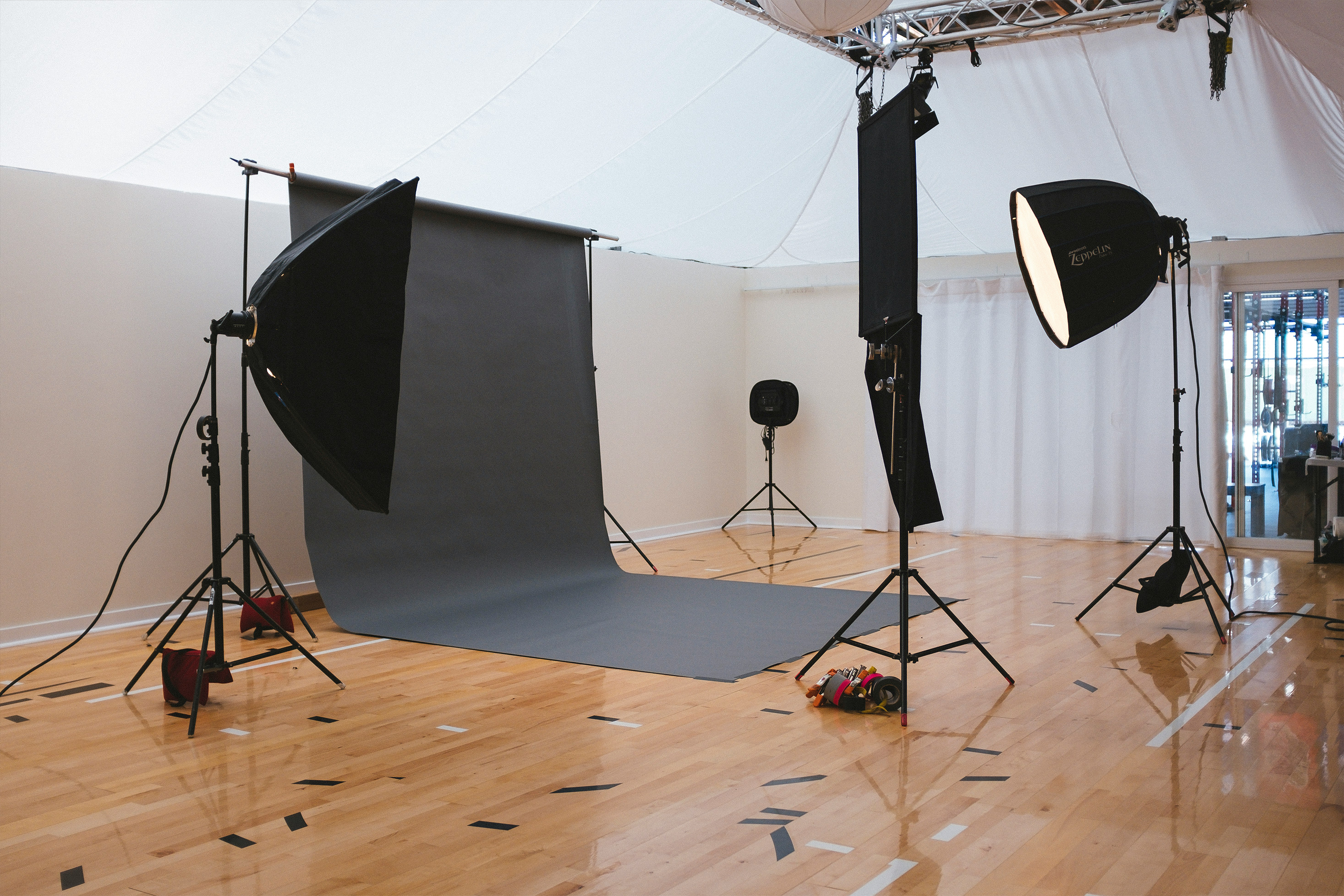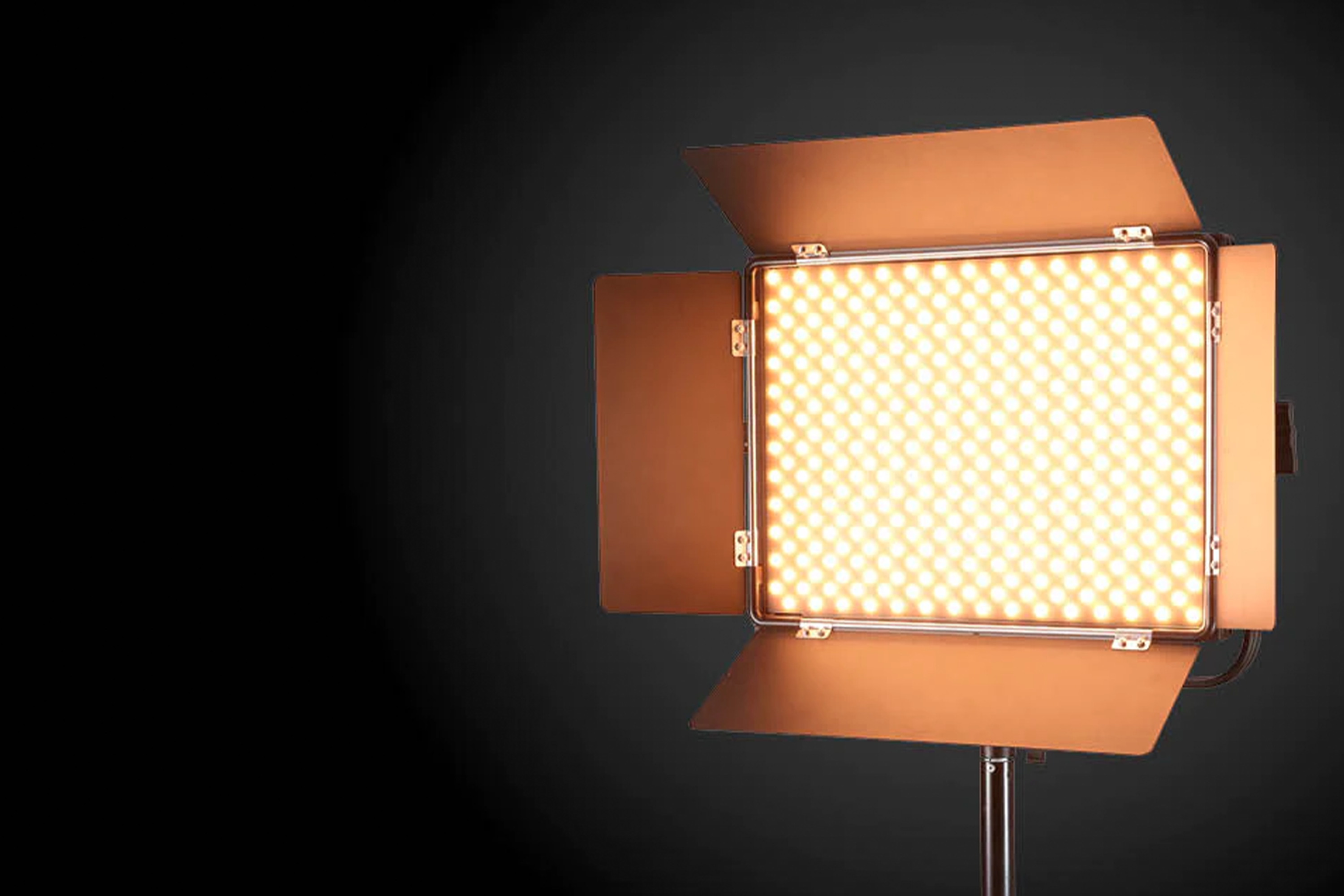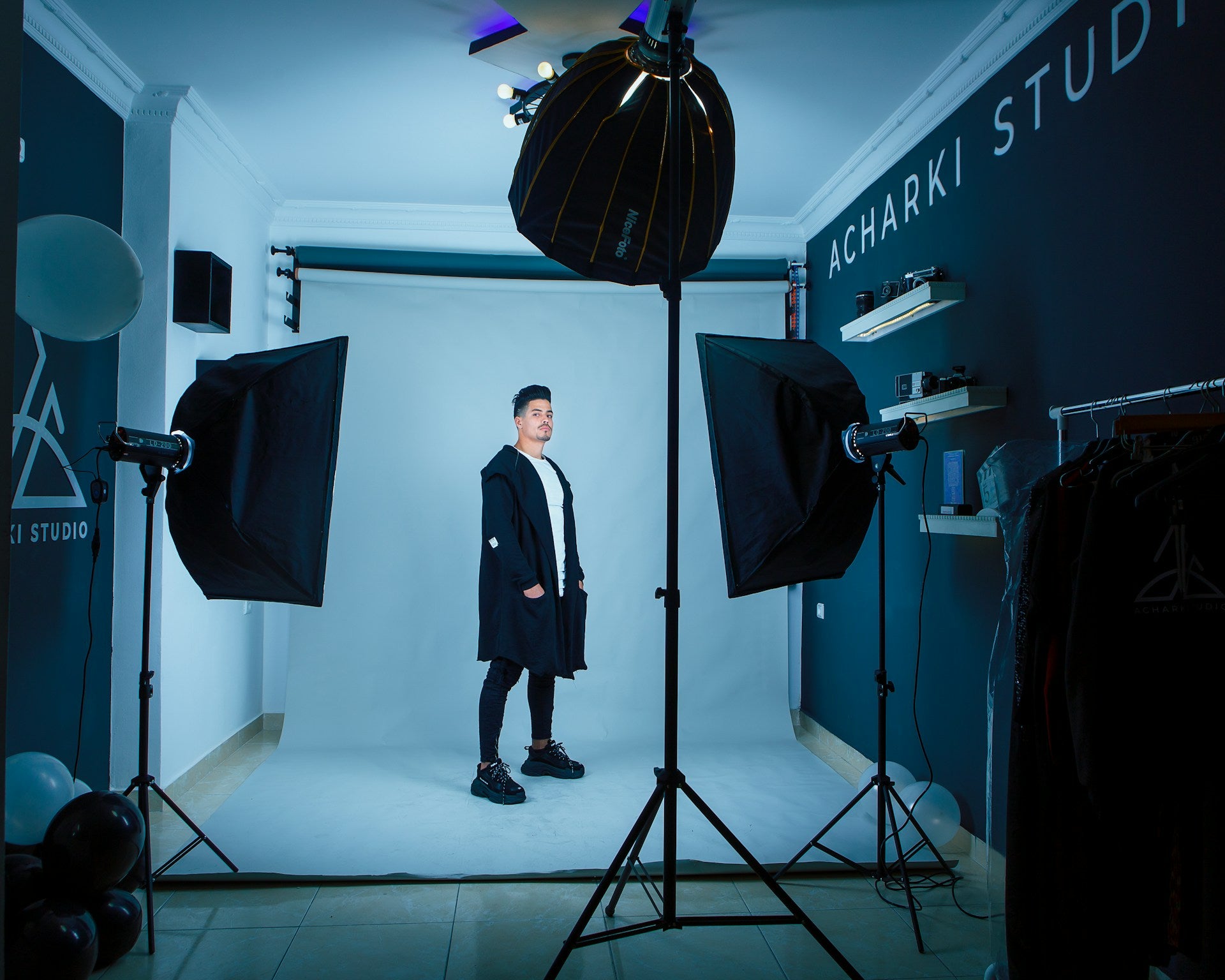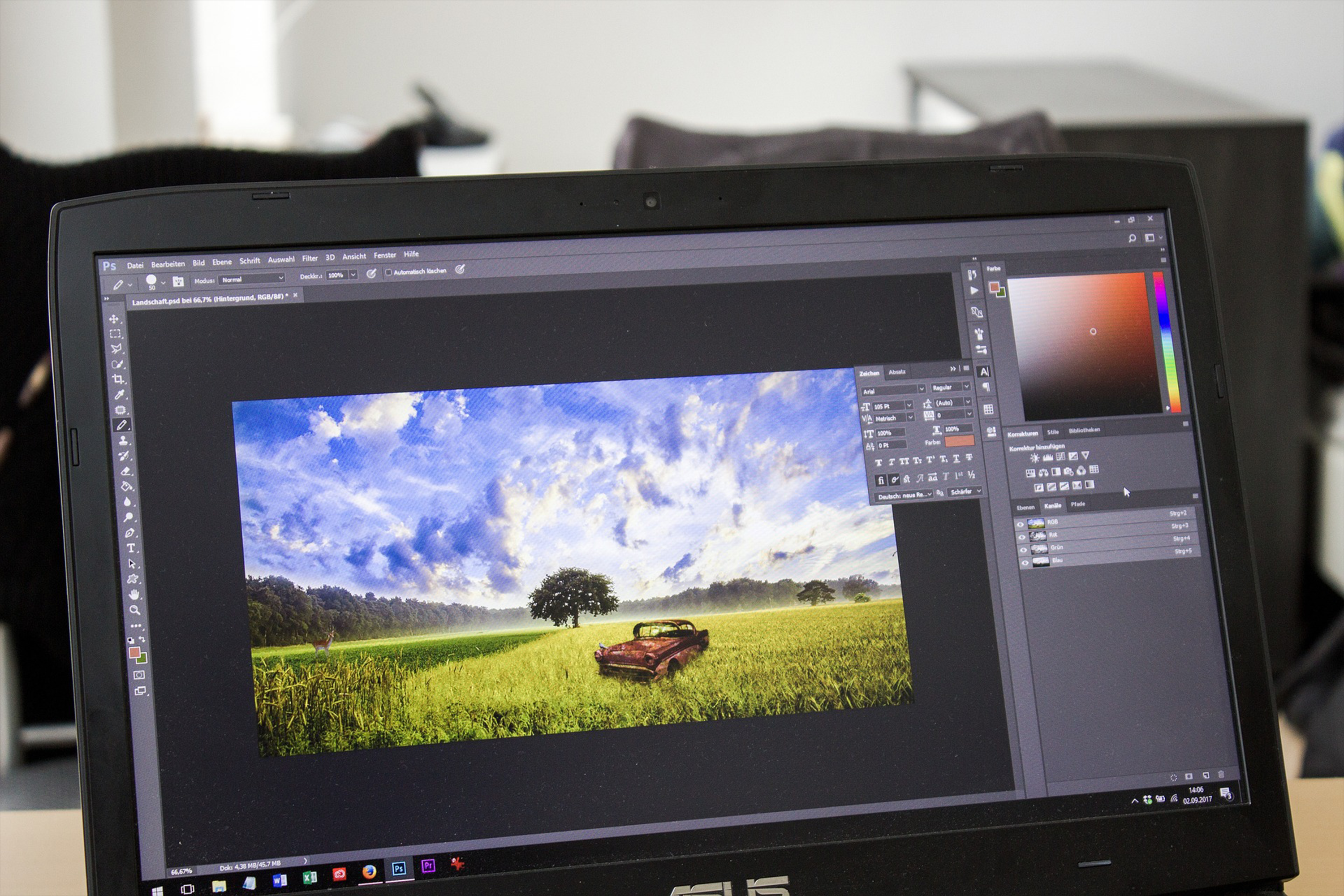In this guide, we'll cover the essential basics of studio photography for beginners to help you get started.
Setting up the studio

The first step is to set up the room for studio photography. To do this, you need enough space for your equipment and models. Make sure the room has enough lighting and power outlets for the lighting.
Choosing the right equipment

You don't necessarily need a lot of expensive equipment to get started. However, some basic elements are essential:
Camera: A DSLR or mirrorless camera is ideal, but a high-quality compact camera can also produce good results.
Lenses: A standard zoom lens is versatile, but depending on the type of photography you may also need specialty lenses such as a wide-angle or telephoto lens .
Lighting: Basic studio lighting usually includes two or three light sources, such as softboxes , studio flashes or LED panels .
Background: A background system with different background cloths or papers allows you to customize the background of your photos as you wish.
Understanding lighting

Lighting is one of the most important aspects of studio photography. Learn the basics of lighting , such as positioning light sources to create or minimize shadows, as well as using light modifiers such as softboxes or umbrellas to create soft, diffused light.
Control the exposure

Understanding exposure is crucial to taking good photos in the studio. Experiment with the different settings on your camera, such as aperture , shutter speed and ISO , to get the right exposure for your subject.
Guiding the model's pose

When working with a model, it's important to provide posing instructions to achieve natural and appealing results. Practice different poses and experiment with angles and expressions to find the best representation.
The post-processing

Once the photos are in the can, you can further optimize your images using image editing software such as Adobe Photoshop or Lightroom . You can adjust contrast and color, retouch skin , and refine other details.
Studio photography offers an exciting opportunity to develop your creative skills and create impressive images. With the basics mentioned above, you can immerse yourself in the world of studio photography as a beginner and improve your skills step by step. Experiment, practice and let your creativity run wild!
If you also have great studio photos , please tag us on Instagram and Facebook with the hashtag #jinbeifotobox . We look forward to seeing your results!




